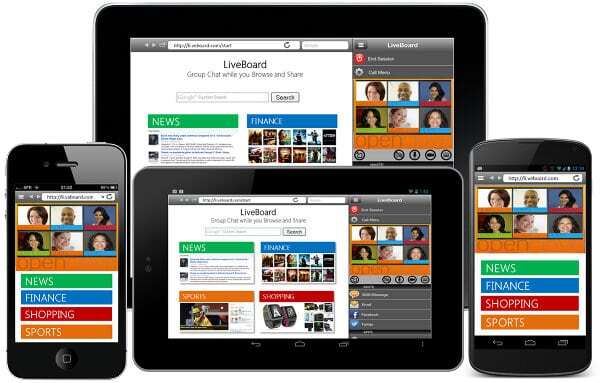Developers have multiple platforms and solutions for WebRTC today that the can leverage, each with its own nuances and focus. OpenClove is one such solution.
WebRTC is a feast for developers. They can use it in so many ways. The most straight forward one is to just use WebRTC directly. From there, you can get easier/nicer wrappers, generic API platforms and even specific use case coverage (anyone said widget for websites?).

OpenClove sits somewhere between generic API to coverage of specific use cases. It is also one of the API platforms to extend WebRTC for mobile apps that developers should be aware of. I asked Shubh Agarwal, VP Marketing at OpenClove a few questions and wanted to share his answers with you here.
What is OpenClove all about?
OpenClove (Open Cloud Video) is about bringing the next disruption in communications, by embedding it within context and content across mobile and web. We want to enable any app provider or developer to embed multi-user video and audio communications into mobile apps to bring exciting social and collaborative user experiences to market. For this, OpenClove has developed a cloud based real-time video processing core to optimize mobile delivery and simplify the delivery of RTC for app developers. We are calling this MobileRTC (= WebRTC + Cloud + Mobile).
OpenClove is also releasing apps such as LiveBoard, to introduce contextual communications directly to users. It leverages our technology and helps developers to comprehend the power of embedded RTC and drive new innovations.

You offer a telephony API platform with a focus on multipoint video.
Yes, OpenClove Video Exchange (OVX) mixes streams in the cloud, transcodes and compresses streams to optimize delivery of multi-party video over mobile networks. We can deliver a 9 party video call in 300-400 kbps. This system is live on Amazon EC2 and all the functionality to control this resource is available for access through open APIs at developer.openclove.com.
On the front end we support multiple platforms – WebRTC browsers (under private beta), and SDKs (based on WebRTC) for iOS and Android. SDKs enable both HTML5 and Native mobile apps to embed WebRTC. LiveBoard app utilizes this SDK.
Who do you see as your possible customers?
Our customers are any app developers or enterprises who can enhance their user experience with real time communications. We are working with enterprises across several verticals to enable a variety of use case:
- Financial sector to enhance trading and advisor applications
- Education sector – tutor engagements (read about some innovative ideas from AT&T Aspire Hackathon)
- Enterprise Social networks
- Social and Collaborative Shopping
What signaling have you opted for in your solution?
The core utilizes a mix of SIP and REST protocols… but all that is wrapped tight behind open APIs. In fact, our system does not even require user authentication as that is left under the control of the app developer or leverage any social graph IDs (in comparison to G+ Hangouts or Skype). All they do is get an APIKey from our Mashery-enabled portal, download our SDKs, integrate and they are up and running in about a couple of hours – that simple.
What technologies are you using in your backend?
We have built and optimized OVX core video mixing and processing engine ourselves. We have developed a flexible architecture that allows us to offer multiple codec support and features like dynamic link compression, network recording and streaming very rapidly to support a wide range of use cases. We have also spent a lot of effort in deploying a high availability architecture for the cloud and enable elastic scalability. OVX leverages all the standard codecs such as VP8 to H.264 etc. Currently we are tuning our processing engines to support various WebRTC implementations. The API controller utilizes a range of open source and off-the-shelf web technologies.
Do you have any mobile SDKs to complement your offering?
Yes, iOS and Android. They can be seen working in our app – LiveBoard. SDKs are available for free on developer.openclove.com.
What challenges did you have with the use of WebRTC?
Implementation and testing is highly dependent on Chrome implementation. This works ok if both sides are the same version Chrome (like 99% of WebRTC demos today). Even Chrome and Firefox had to “work closely” to make it work across browsers. But given that we are plugging our OVX cloud to expand the reach of WebRTC to mobile apps, we hope to see more parties get involved to stabilize changes in the communication stream.
Given the opportunity, what would you change in WebRTC?
Nothing fundamentally – it is a great solution for browsers. It simplifies RTC delivery. Lack of Safari and IE support is an adoption barrier. The other limitation in WebRTC is multi-party support. We want to see WebRTC standards remain open, so that innovators like us can bring new technologies, such as a cloud mixer, to enhance or expand the reach of contextual communications across browsers, mobiles and tablets.
What’s next for OpenClove?
Successful launch of our WebRTC browser support and help our customers launch their apps. We want to see communications become a feature of many apps to come.
–
The interviews are intended to give different viewpoints than my own – you can read more WebRTC interviews.
